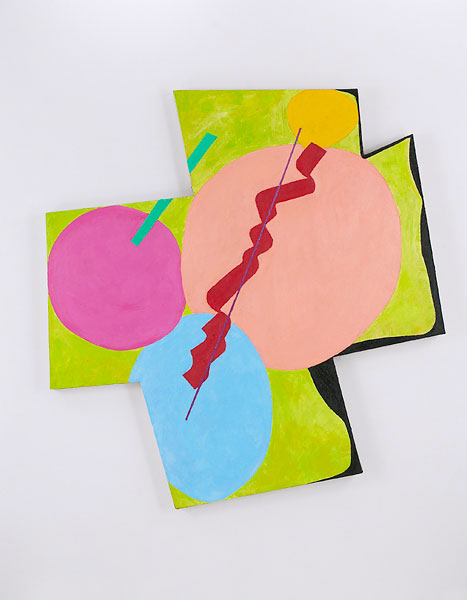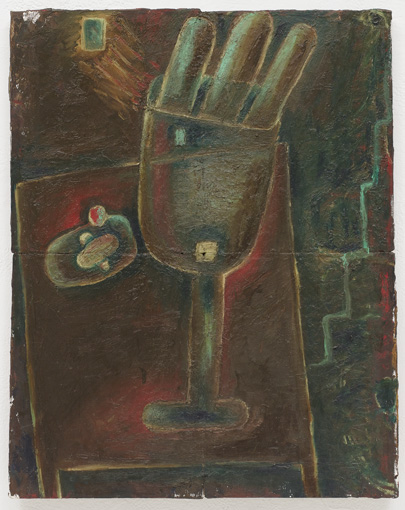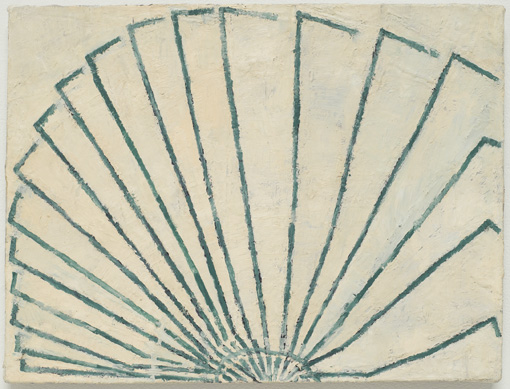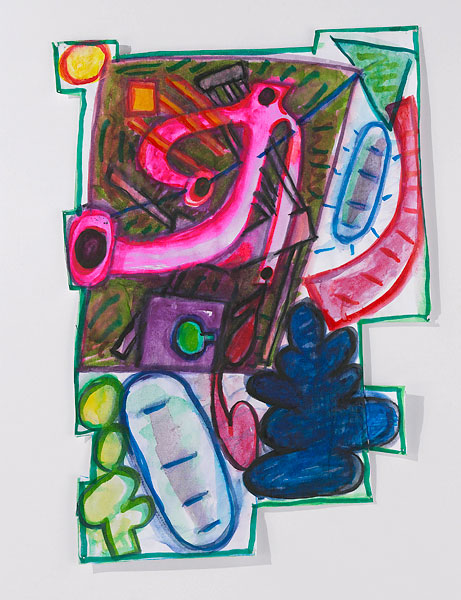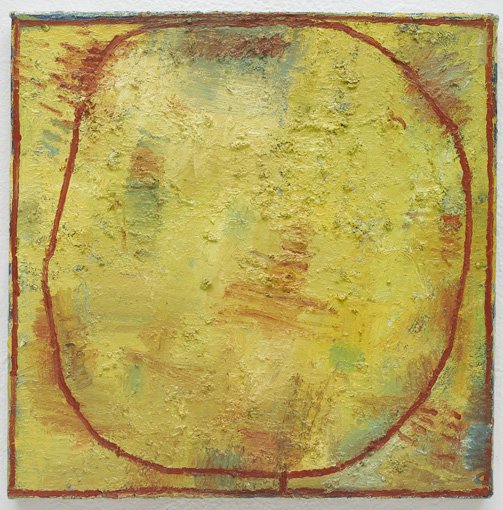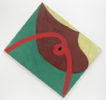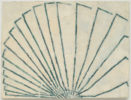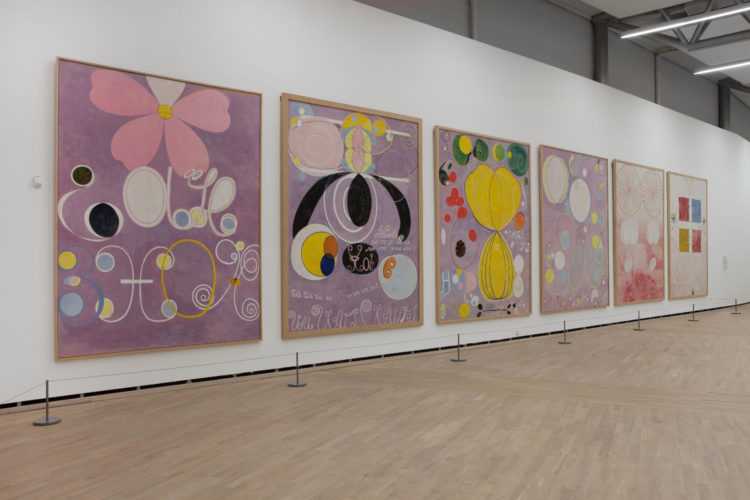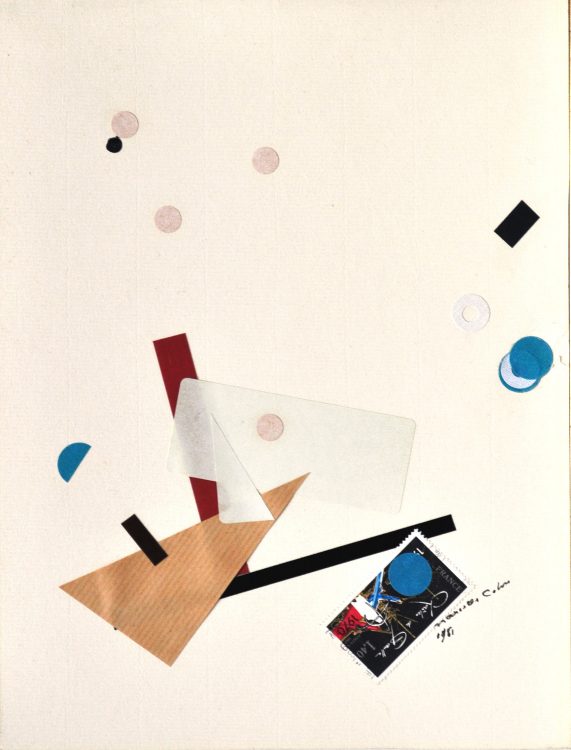Elizabeth Murray
Graze Sue (ed.), Elizabeth Murray: Paintings and Drawings, exh. cat., Museum of Art, Dallas (1 March – 19 April 1987), New York, Harry N. Abrams, 1987
→Storr Robert (dir.), Elizabeth Murray, exh. cat. Museum of Modern Art, New York ; Institut Valencia d’art moderne, Valence (2005 – 2006), London, Thames & Hudson, 2005
Elizabeth Murray, Museum of Modern Art, New York ; Institut Valencia d’Art Modern, Valence, 2005 – 2006
→Elizabeth Murray, Paintings in the ‘80s – Pace Gallery, New York, 2 November 2017 – 13 January 2018
American painter and sculptor.
Elizabeth Murray dedicated her life to pushing the boundaries of painting and revitalising it in the 1970s-1980s, treating it as a subject of study in its own right. She grew up in Illinois in a Catholic family of Irish origins and graduated from the Art Institute of Chicago in 1962, and from Mills College in Oakland, California in 1964, while also undertaking academic art training. In 1967, she moved to New York with her husband, the sculptor Don Sunseri (1939-2001). She was strongly influenced by late 19th and early 20th century painting, referring to Cézanne (1839-1906) and Picasso (1881-1973) in particular. In the 1970s, under the influence of pop art – particularly that of Claes Oldenburg (1929) – she created her first painting-objects and sculptures. She also started to teach at Rosary Hill College in Buffalo, New York, and regularly taught at Bard College in Annandale-on-Hudson (1974-1977) and at the New York School of Visual Arts (1978-1980). Her work stood out from that of other contemporary art movements such as minimalist or conceptual art, as she abandoned three-dimensional works in 1971 to focus on oil painting in and of itself. The following year, she participated for the first time in a major exhibition: her painting Dakota’s Red (1971-1972) was presented at the Whitney Annual held at the Whitney Museum of American Art. She held a solo exhibition at the Jared Sable Gallery in Toronto in 1975 and was later represented by the Paula Cooper Gallery in New York. Alongside these activities, she discovered the concave and convex paintings of Ron Gorchov (born 1930); she started to work on formats that countered traditional canons: in addition to her rectangular canvases, she chose to experiment on frames with distorted contours. Painting was thus no longer intended as an open window onto the world, in the tradition of the Italian Renaissance: it became a subject with its own inherent depth.
In the late 1970s, E. Murray adopted an increasingly abstract style, while incorporating a few figurative elements. Her brightly coloured works are reminiscent of sculptures associating geometric shapes and irregular, undulating biomorphic forms, similar to those of the human body, as with Children Meeting, a large-format painting presented at the Whitney Biennial in 1978. In 1980, she met the poet Bob Holman (born 1948), who she married two years later and with whom she would have two daughters. Her paintings from this period were progressively deployed in space and variously unfold as hybrid elements, between geometric abstraction and surrealist forms, with a systematically bright palette: Art Part (1981) comprises geometric fragments hung on the wall, like a shattered puzzle. Still lifes subsequently became her subject of predilection and she reinterpreted everyday objects, as with Dis Pair (1989-1990), a monumental painting of a pair of shoes that wavers between figuration and abstraction. Her recent paintings, in three dimensions, evoke the world of comics and graffiti, associating geometric shapes, body fragments, ordinary objects, and symbolic elements. E. Murray has been awarded many prizes and honours. In 1992, she became a member of the American Academy of Arts and Letters; she was also elected Doctor Honoris Causa of the Art Institute of Chicago in 1992 and of the New School in New York in 2001. Over the summer of 1995, she curated the second exhibition dedicated to women artists at the Museum of Modern Art, “Artist’s Choice, Elizabeth Murray: Modern Women”. Aside from their presentation in numerous retrospectives, her exuberant and energetic artworks can also be found among the most significant American collections.
© Éditions des femmes – Antoinette Fouque, 2013
© Archives of Women Artists, Research and Exhibitions, 2018




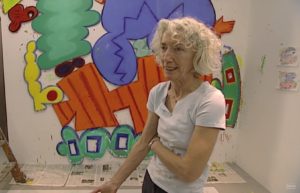 Elizabeth Murray - "Bop" Art 21
Elizabeth Murray - "Bop" Art 21 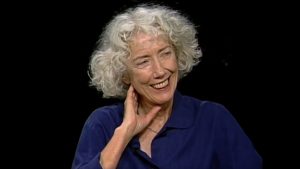 Manufactu Intellect - Artists of the Moment: Elizabeth Murray and Art Critics interview (2002)
Manufactu Intellect - Artists of the Moment: Elizabeth Murray and Art Critics interview (2002) 